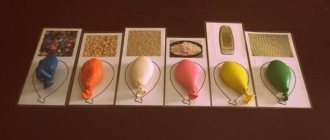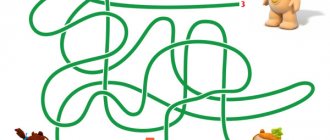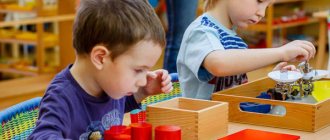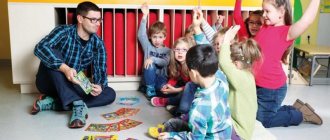Hyperactivity - what is it?
Hyperactivity is not a behavioral problem, not “promiscuity,” as many people think.
This is a medical diagnosis that can only be made by a specialist. Hyperactivity is based on dysfunction of the brain. It is important to distinguish a child who is restless and active from a child who is hyperactive.
Hyperactive children often experience restless movements in the hands and feet. They may get out of their seat during class, constantly spin and twirl, and cannot play calmly. They are chatty and answer a question without listening to the end. First they do, and then they think. Impulsive, explosive, overly distracted - that's all about them.
Hyperactivity prevents children from making progress and establishing warm, trusting relationships with people. They cause irritation among peers, and sometimes even among teachers. Without a doubt, these children need help, participation and patience from adults. You can read more about hyperactivity here.
Progress of the exercise:
The teacher invites the children to play the game “Fun Pencil”
and with its help, complete the drawing of objects, outline drawings, letters, shade images of various objects, etc.
TETRIS
correctional exercise for the development of logical thinking
Target:
• Learn to correlate planar figures with a model and in practical action with objects.
• Learn to use the trial method, discarding erroneous options and fixing the correct ones.
• Develop logical thinking by putting figures in a certain order and in specially designated tabs.
Equipment:
Frame – liner with six windows; geometric shapes of rectangular and square shapes of various sizes and colors.
Progress of the exercise:
The teacher shows the frame-insert and explains that “residents”
- geometric figures.
To close all the windows, you need to place the figures correctly, without leaving empty spaces in the windows. The teacher helps with folding, showing the trial and error method, and also draws the children's to the correct placement of the figures, while constantly approving the child's actions.
BUTTERFLY
didactic game for developing finger movements
Target:
• Teach children how to fasten buttons.
• Develop fine hand movements.
• Form a positive emotional attitude towards the game.
• Develop purposeful actions with objects.
• Form a holistic image of an object, composing the whole from parts.
• Learn to distinguish colors, focus in the game on color as a significant feature.
Equipment: Body parts of a butterfly cut out of cardboard and covered with fabric, trimmed with colored braid, a whole figurine of a butterfly made from the same parts (the parts are connected using buttons of various shapes)
.









